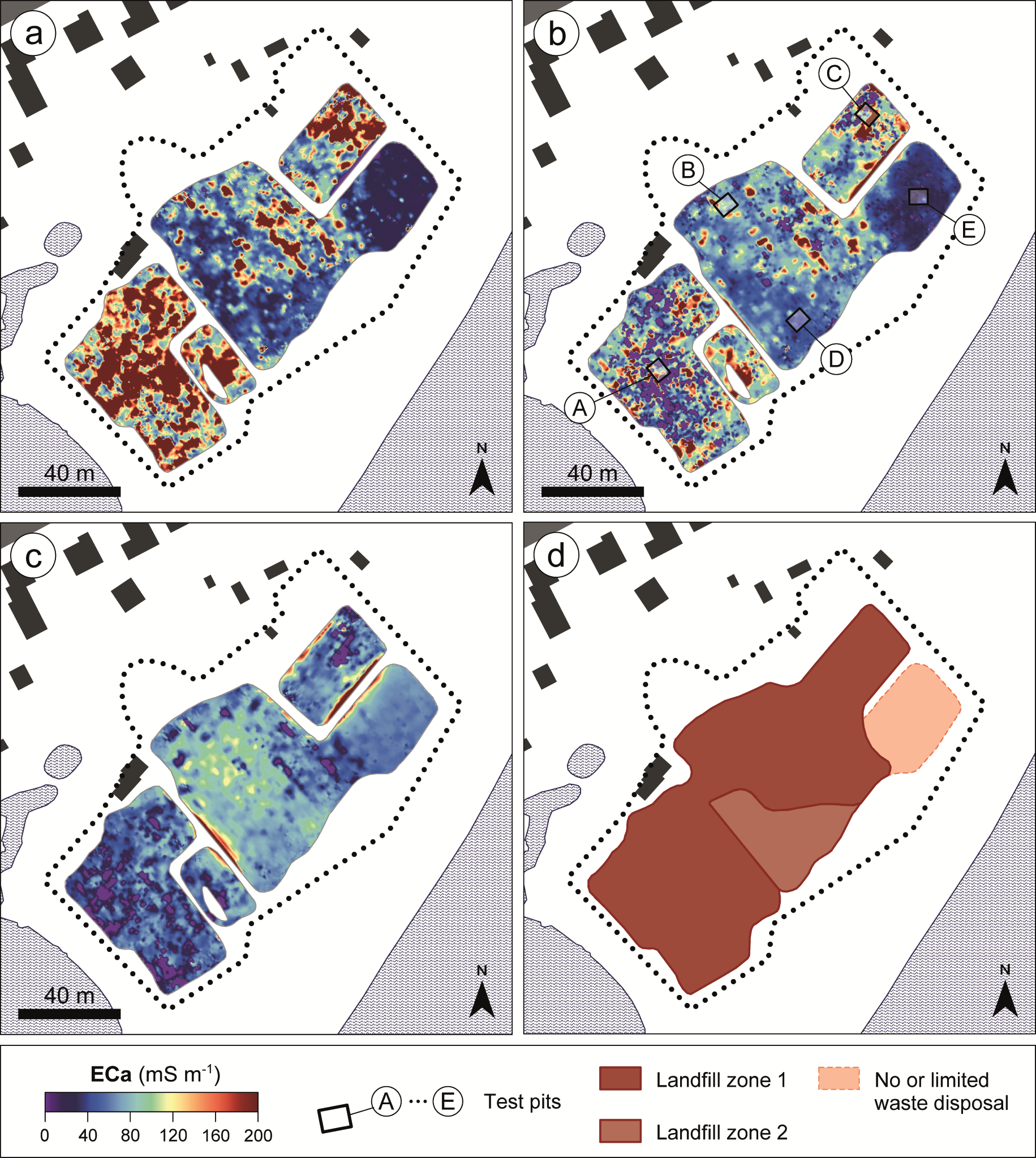On September 21st 2017, our EURELCO-colleague Ellen Van De Vijver received the degree of Doctor in Applied Biological Sciences at Ghent University. She successfully presented her dissertation ‘Proximal soil sensing in the context of urban (re)development: an evaluation of multi-receiver electromagnetic induction and stepped-frequency ground penetrating radar at landfills and industrial sites’.
The acquisition of reliable and representative information about the subsurface is a prerequisite for success. Due to diverse anthropogenic influences, the soil in urban and industrial environments typically shows strongly heterogeneous properties. Conventional methods for soil survey, which commonly rely on a limited number of discrete observations from borehole drillings and excavations, are often insufficient to capture the full extent of spatial heterogeneity. Proximal geophysical sensors enable measuring physical soil properties in a non-invasive way, providing an efficient alternative to collect spatially comprehensive data.
For landfills, it was demonstrated that a geophysical survey provides for an accurate estimation of the lateral extent of the landfill and an indication of the types of waste present. The presented case studies evidence that confident interpretations can be made, however, absolute certainty on the nature of the disposed material can only be achieved through feedback information from conventional soil sampling. Yet, the spatially exhaustive information derived from high-resolution, full-coverage surveys with electromagnetic induction and ground penetrating radar can serve as a guide for the design of invasive sampling campaigns. The number and locations of samples can be tailored to the spatial variations observed in the geophysical data sets, which not only improves the efficiency but also increases the reliability and representativeness of the characterization results. Furthermore, geophysical surveying offers a rapid means to gain an integrated view on the nature and spatial variability of the subsurface which can support the evaluation of the relevance of further investigation and the prioritization of landfill sites according to their ELFM potential.
Dr. Ellen Van De Vijver’s work on the application of geophysical sensors at landfills and brownfield sites outlines new perspectives in the safe, cost-effective and spatially comprehensive characterization of these anthropogenic features.

